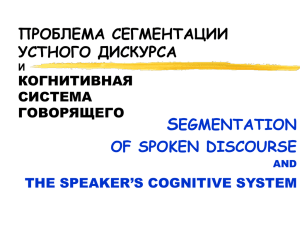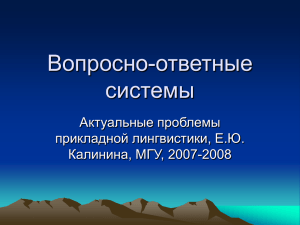Наш климат
advertisement
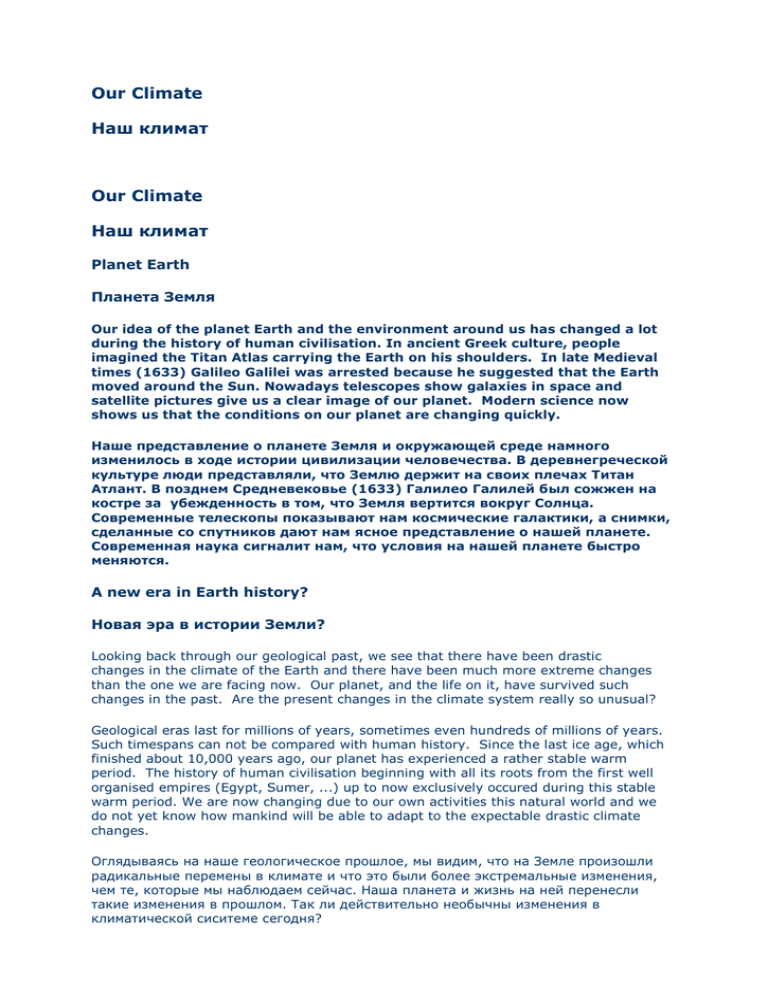
Our Climate Наш климат Our Climate Наш климат Planet Earth Планета Земля Our idea of the planet Earth and the environment around us has changed a lot during the history of human civilisation. In ancient Greek culture, people imagined the Titan Atlas carrying the Earth on his shoulders. In late Medieval times (1633) Galileo Galilei was arrested because he suggested that the Earth moved around the Sun. Nowadays telescopes show galaxies in space and satellite pictures give us a clear image of our planet. Modern science now shows us that the conditions on our planet are changing quickly. Наше представление о планете Земля и окружающей среде намного изменилось в ходе истории цивилизации человечества. В деревнегреческой культуре люди представляли, что Землю держит на своих плечах Титан Атлант. В позднем Средневековье (1633) Галилео Галилей был сожжен на костре за убежденность в том, что Земля вертится вокруг Солнца. Современные телескопы показывают нам космические галактики, а снимки, сделанные со спутников дают нам ясное представление о нашей планете. Современная наука сигналит нам, что условия на нашей планете быстро меняются. A new era in Earth history? Новая эра в истории Земли? Looking back through our geological past, we see that there have been drastic changes in the climate of the Earth and there have been much more extreme changes than the one we are facing now. Our planet, and the life on it, have survived such changes in the past. Are the present changes in the climate system really so unusual? Geological eras last for millions of years, sometimes even hundreds of millions of years. Such timespans can not be compared with human history. Since the last ice age, which finished about 10,000 years ago, our planet has experienced a rather stable warm period. The history of human civilisation beginning with all its roots from the first well organised empires (Egypt, Sumer, ...) up to now exclusively occured during this stable warm period. We are now changing due to our own activities this natural world and we do not yet know how mankind will be able to adapt to the expectable drastic climate changes. Оглядываясь на наше геологическое прошлое, мы видим, что на Земле произошли радикальные перемены в климате и что это были более экстремальные изменения, чем те, которые мы наблюдаем сейчас. Наша планета и жизнь на ней перенесли такие изменения в прошлом. Так ли действительно необычны изменения в климатической сиситеме сегодня? Геологические эры дятся миллионы, иногда даже сотни миллионов лет. Такие временные промежутки несоизмеримы с историей человечества. Со времен последнего ледникового периода, который закончился около 10 000 лет назад, на нашей планете воцарился довольно стабильный теплый период. История человеческой цивилизации, начавшаяся с первых хорошо организованных империй( Египетская, Сумерская и т.д.), до настоящего времени проистекает в этом теплом периоде. Сейчас, вследствие нашей активности и жизнедеятельности мы изменем этот естественный мир, и мы еще не знаем как человечество будет адаптироваться к ожидаемым переменам климата. . Carbon dioxide concentrations and assumed teperatures over the last 20,000 years. About 18,000 years ago, the last ice age was at its maximum (the little map shows the ice sheets). About 3,300 years ago Echnaton and Nofretete (bust, Egypt Museum, Berlin) reigned in Egypt. sources: *1 - Click to see full size! (120 K) Figure 4 tells us that changes in carbon dioxide (CO2) levels and changes in the Earth's temperature are highly correlated. Information from bubbles enclosed in polar ice sheets let us look back 400,000 years into the past. CO2 mixing ratios ranged between 180 ppm (parts per million) during the ice ages and 280 ppm in warm periods. Today levels are reaching values of 370 ppm due to human emissions of CO2 from fossil fuel burning. None of our early ancestors experienced such conditions. In the second half of the 20th Century, we have become more and more aware that our climate is changing. This has led to greater scientific study and understanding of our climate. In the ESPERE Climate Encyclopaedia we explain how the climate system works and how humans have altered it. This overview gives you a brief introduction to all the topics we look at. Рисунок 4 показывает, что между изменениями уровня углекислоты (CO2) и изменением температуры на Земле есть прямая взаимозависимость. Информация, которую получили из пузырьков воздуха, заключенных в слой полярного льда, позволяет нам посмотреть в прошлое на 400 000 лет назад. Соотношение CO2 колебалось в пределах 180 чнм(частиц на миллион) во время ледниковых периодов и 280 чнм в периоды потепления. Сегодня эти показатели достигают уровня 370 чнм вследствие недоокисленных продуктов распада, образовавшихся в результате человеческой жизнедеятельности........... Никто из наших ранних предков не существовал в таких условиях. Во второй половине 20 века мы все отчетливее осознаем, что наш климат меняется. Это привело к огромным научным исследованиям и более глубокому пониманию нашего климата. В климатической энциклопедии ESPERE мы объясняем как работают климатическая система и как человек может влиять на нее. Этот общий обзор даст вам краткую информацию на рассматриваемые нами темы. 4. Air bubbles in ice cores and tracers in sediments are witnesses of former milleniums. Looking back over 400,000 years of history, we can see that carbon dioxide levels have changed from 180 ppm during ice ages to 280 ppm during warm periods. 400,000 years ago earlier species of our human genus lived on Earth as homo heidelbergensis (reconstructed profile on the left). 100,000 years ago we find homo neanderthalis (reconstructed profile on the right). source: *2 Click to see full size! (120 K) The Sun .. is the source of the energy which drives our climate system. This energy is transported as radiation through space. If there are slight changes in the activity of the Sun or in the orbit of the Earth around the sun, these will have a direct impact on our climate. Солнце.. Это источник энергии, поддерживающий нашу климатическую систему. Эта энергия достигает Земли сквозь космическое пространство в виде радиации. Малейшие изменения в солнечной активности или траектории Земли вокруг солнца могут привести к изменению нашего климата. The Atmosphere .. Атмосфера.. is the main subject in the first four topics of the Climate Enyclopaedia. Variations in the activity of the Sun are generally rather regular and don't appear to have been large enough to significantly change our climate over the last 1000 years. We can study how much energy comes from the Sun, how much reaches our atmosphere and how much of this energy gets to the surface of our Earth. This is the Earth's radiation budget and we look at this in the section on the LOWER ATMOSPHERE. This is the part of the Earth's atmosphere scientists call the troposphere and it extends from the Earth's surface up to between 8 and 15 km above us. Главный предмет нашего изучения в первых четырех темах климатической энциклопедии. Колебания активности солнца в общем довольно регулярны, но не так сильны, чтобы привести к каким-либо значительным переменам нашего климата на протяжении последних 1000 лет. Мы можем изучать сколько энергии дает солнце. Сколько из нее достигает нашей атмосферы и какое количество из этой энергии достигает земной поверхности. Это запасы земной радиации и мы рассмотрим это в разделе НИЖНЯЯ АТМОСФЕРА. Это часть земной атмосферы, которую ученые называют тропосферой, и она простирается от земной поверхности на расстояние от 8 до 15 км над нами. We discuss the importance of the Greenhouse Effect and how greenhouses gases such as carbon dioxide play a major role in keeping the sun's energy close to the Earth's surface. We shine a light on the rich chemistry going on in this region and the impact of emissions from plants and from fires. We also look at the importance of the gas ozone, which causes summer smog in the troposphere. Мы обсудим важность парникового эффекта и непосредственную роль парниковых газов, например, такого как углекислый газ, в удержании солнечной энергии близко к земной поверхности. Мы прольем свет на богатство химических реакций в этой области и воздействие продуктов жизнедеятельности растений на климат, а также продуктов горения от лесных пожаров. Мы также рассмотрим важность озона, который вызывает летний смог в тропосфере. The next layer of the atmosphere, above the clouds, is the 'stratosphere', reaching roughly up to 50 km in altitude. We look at this layer in the section about the HIGHER ATMOSPHERE. The ozone layer is located here and we look at the processes taking place in this layer which protect us from the dangerous ultra-violet radiation from the sun. We explain how ozone is removed from the stratosphere, why the ozone hole forms and the impacts of this process on our climate. Следующий слой в атмосфере, над облаками, называется стратосферой, достигающий высоты примерно 50 км. Подробнее мы остановимся на этом слое в разделе ВЫСОКАЯ АТМОСФЕРА. Здесь располагается озоновый слой, в котором происходят важные процессы, направленные на защиту нас от опасной ультрафиолетовой радиации солнца. Мы объясним, как озон уходит из стратосферы, почему формируются жзжновые дыры и как это воздействует на наш климат. The troposphere and stratosphere, together, make up for more than 99% of the mass of our atmosphere. We do not discuss higher altitudes here. The WEATHER events we see on Earth take place in the lowest 15 km of the atmosphere. The Earth's rotation and the regional differences in the sun's radiation reaching Earth (leading to a warm equator and cold polar regions), along with the presence of the oceans and continents and varying local surface structures make weather such a complicated issue. Тропосфера и стратосфера совместно составляют более чем 99% всей массы нашей атмосферы. Здесь мы не станем затрагивать более высокие уровни. Наблюдаемые нами погодные события, происходят в атмосфере на высоте 15 км от Земли. Вращение Земли и региональные разницы солнечного излучения, достигающие Земли(ведущие к формированию теплого экватора и холодных полярных полюсов) вместе с океанами и континентами с их поверхностью делают в итоге погоду такой сложной и многообразной. . A simple image of the temperature profile of the atmosphere in the troposphere (T), the stratosphere (S) and the mesosphere (M). The stratosphere also includes the ozone layer (O 3). Please click to enlarge the image! (65 K) Author: Elmar Uherek Lets have a closer look at the CLOUDS & PARTICLES floating in the air. Clouds cover, on average, about 60% of our sky and they strongly interact with the light and energy coming from the Sun. Clouds reflect light back into space, but they also trap heat coming from the Earth and and this keeps the surface of the Earth warm. Rain from the clouds removes particles and soluble trace gases from the air and cleans it. The evaporation of water in the atmosphere uses energy. Tiny particles are needed to start the formation of clouds and, in this section, we look at how this happens and where these particles come from. Clouds and particles are really hard to incorporate into computer models of our climate and, as a result, they are the most important unknowns in the simulation and prediction of our climate. Давайте поближе взглянем ОБЛАКА И ПРИМЕСИ парящие в небе. Облака покрывают в среднем 60% небесного свода и тесно взаимодействуют со светом и энергией, идущих от солнца. Облака отражают солнечный свет обратно в космос, а также удерживают тепло поднимающееся от земли, позволяя его сохраненить. Дожди удаляют примеси и водорастворимые газы из воздуха, делая его чище. Для испарения воды необходима энергия . Маленькие частицы необходимы для запуска формирования облаков и в этом разделе мы рассмотрим как это происходит и откуда берутся эти частицы. Облака и примеси сложно уложить в компьютерные модели и как результат, они наиболее трудно прогнозироваемый климтаческий феномен, и менее всего исследованы в имитационных экспериментах. On the ground .. На земле.. What is going on at the Earth's surface? Most people live in cities and so we hope that the section on CLIMATE IN CITIES will be of some interest to you. Climate in cities has its own rules. Winds along streets behave differently compared to winds in natural landscapes, major parts of the ground are sealed and water storage is reduced. Cities absorb more radiation than other landscapes and heating systems and electricity make cities warmer places than their surroundings. Cities are also usually strong local sources of air pollution from traffic and industry. We look at what is emitted to the air and what impact this has on the climate. Что происходит на Земной поверхности? Большинство людей живет в городах и поэтому мы надеемся что раздел КЛИМАТ В ГОРОДАХ будет вам интересен. Климат в городах имеет свои правила. Ветер на улицах ведет себя по-другому, по сравнению с ветром в естественных ландшафтах, большая часть почвы скрыта и The OCEANS do not only affect our climate but are also influenced by climate change. Water in the oceans stores heat from the sun and transports it from the equatorial regions to the poles making it possible for life to exist on Earth. The oceans take up about one third of the carbon dioxide released by man and store it in the deep sea. In this way they reduce the effect of global warming. Small plants in surface waters, known as phytoplankton, help to take up this carbon dioxide. They also emit sulphur compounds which affect climate and also help to form clouds, which again influences our climate. Global warming also affects the ocean. The most obvious consequence is an increasing sea level. Since about 60% of the world's population live within 100 km of the coast, sea level rise could cause major problems for the human population. If annual rainfall is too small, if large areas become flooded, if it starts freezing or there are heat waves at critical times of plant development this affects our food supply. We look at the effect of climate change on agriculture in the section on FOOD & CLIMATE. Predicting the likely outcome of climate change will help us adapt our farming techniques and prevent food shortages. In some areas, climate change will make it easier to grow food. In other areas, particularly in poor and developing countries, the conditions for farming will worsen. Are people changing climate? PEOPLE CHANGING CLIMATE is the subject of our next section. Here we look at how we are changing our climate and what the consequences of our actions are. We show some local examples and look at the problems that we are likely to have in the future. We also take a look at how the scenarios for the future climate will change depending on our personal way of life and the actions of politicians. Studies of the SUN & ICE are important in order to understand human influence on climate. Scientists are trying to find out how much of the climate change we are observing now is due to a variability in the sun's activity and how much is due to human activity. Because Antarctia is so far away from major human activity, it is the cleanest place on Earth. Measurements of trace gases in the Antarctic tell us how emissions to the atmosphere are spreading over the globe. The big ice sheets consist of compressed snow from past centuries and millenia. They contain air bubbles from the time when the ice was formed. Investigations of the air in such bubbles can tell us a lot about the climate in the past. Computer MODELLING uses this data, as well as measurements of climate variables made today. Models help us to estimate what may happen to our climate in the future. Understanding our climate Our climate system is extremely complicated and we do not yet know all the factors which affect it. This makes it difficult to simulate in model runs what will happen in the future, although the world's biggest supercomputers are working on such models. Even if we can develop computer models which can realistically represent what is happening now, we do not know how humans will behave in the future. We do not know how the Earth's population will go on growing, what energy resources will be used in 50 years, how different economies will develop, where and when wars will take place and in which countries politicians and the people will promote sustainable development. It is not climate scientists, who are responsible for what will happen in the future, it's all of us. Our aim is, therefore, to share our knowledge so that you can get an idea of how such a complex system works and what the most likely outcomes of climate change are. It will take you perhaps 30 minutes to read through these introductory 'Climate in brief' pages. These will give you an overview of our climate. After that you can enter the 'Climate Encyclopaedia' to get more information about the topics which are of most interest for you. Internet sources of picture parts: *1 Image 3: Nofretete: http://www.smb.spk-berlin.de/amp/vg/s1.html temperature and CO2 diagramme: http://www.brighton73.freeserve.co.uk/gw/globalwarmingfaq.htm ice cover map: http://www.geologieinfo.de/palaeokarten/m0_018.html *2 Image 4: homo heidelbergensis: Reiss-Engelhorn-Museum Mannheim, reconstruction: W. Schnaubelt & N. Kieser http://www.zum.de/Faecher/G/BW/Landeskunde/rhein/ma/reissmuseum/menschzeit/ homo neanderthalis: reconstruction Elisabeth Daynes http://www.ifi.unizh.ch/staff/zolli/CAP/MainNeander.htm
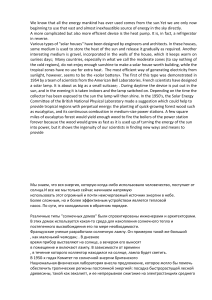
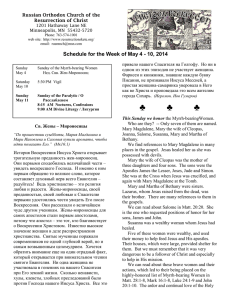
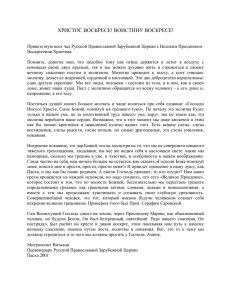



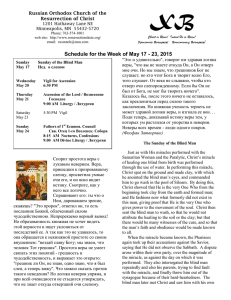




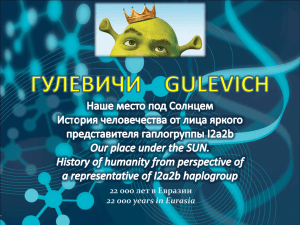
![[19] Джон Куинси Адамс, «Юбилей Конституции» (Нью](http://s1.studylib.ru/store/data/004300969_1-a98d90560871d76cb9c95d7e5c54814f-300x300.png)
